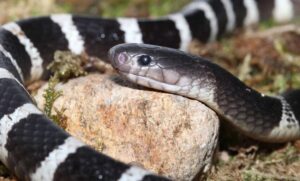Thanks to their superior hunting skills, feline species have been able to grow and thrive on most continents. These animals are not only much fiercer than domestic cats, but their size can also be described as “gigantic.” Join KnowAllAnimals to explore the Top 9 Largest Big Cats in the World You Need to See in the article below!
1. Top 9 Largest Big Cats in the World You Need to See
Here are the nine largest cat species in the world, ranked from smallest to largest. The size of the largest species may surprise you!
1.9. Clouded Leopard
- Kingdom: Animalia
- Phylum: Chordata
- Class: Mammalia
- Order: Carnivora
- Suborder: Feliformia
- Family: Felidae
- Subfamily: Pantherinae
- Genus: Neofelis
- Species: N. nebulosa
Clouded leopards are smaller in stature than leopards and other big cats. This species can grow up to 1 meter long and weigh up to 25 kg.
Clouded leopard populations extend from Nepal, through Southeast Asia, and into China. However, their populations are fragmented and declining due to human activities such as deforestation and illegal hunting. They eat a variety of animals, including slow lorises (a small primate) and small deer.
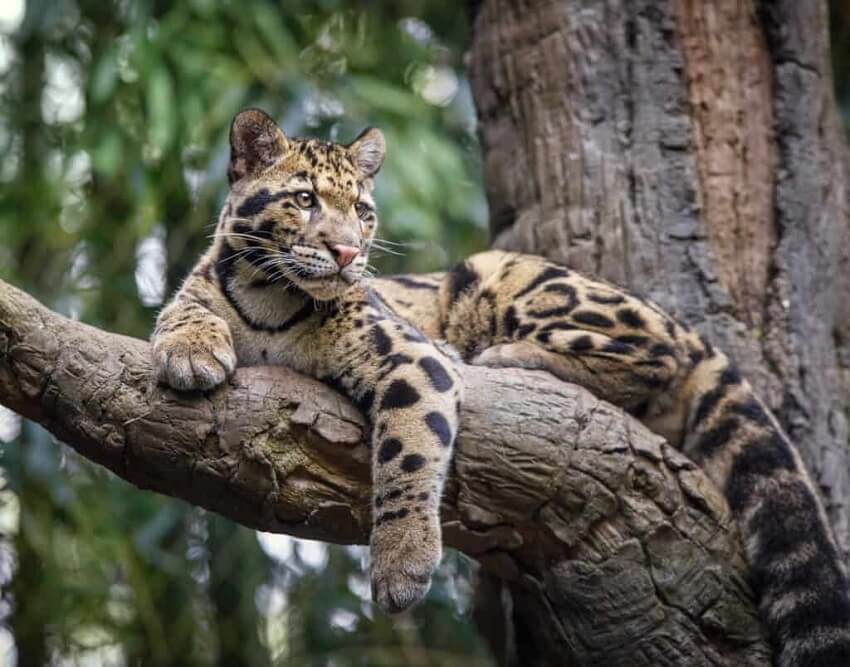
1.8. Lynx
- Kingdom: Animalia
- Phylum: Chordata
- Class: Mammalia
- Order: Carnivora
- Suborder: Feliformia
- Family: Felidae
- Subfamily: Felinae
- Genus: Lynx Kerr, 1792
Lynx are wild cats with a tuft of black fur on their ears and a short, stubby tail. They are found in North America, Europe, and Asia. There are four species of lynx, of which the bobcat (Lynx rufus) is the smallest, only twice the size of a domestic cat, but other lynx species are much larger.
The Eurasian lynx (Lynx lynx) is the largest lynx species, growing up to 1.3 meters long and weighing up to 36 kg. The diet of the lynx is quite varied, including rodents, birds, and deer.
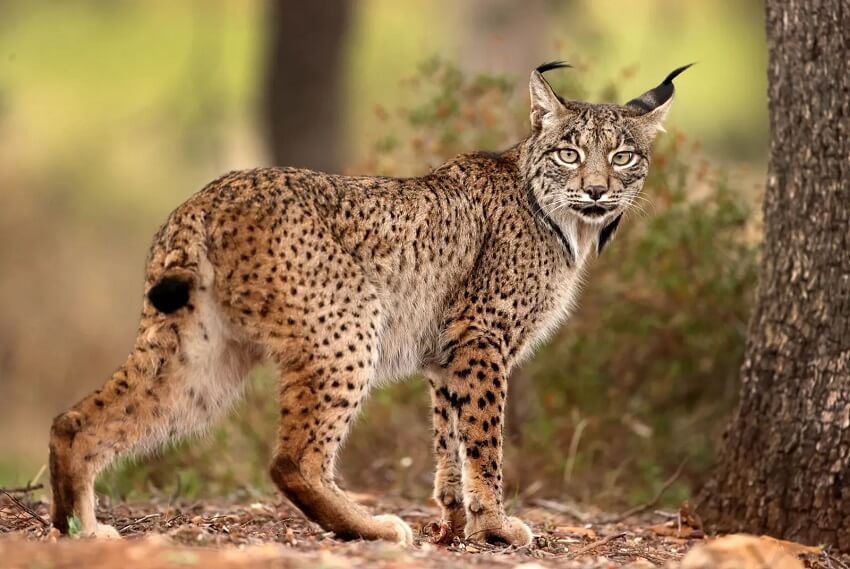
1.7. Snow Leopard
- Kingdom: Animalia
- Phylum: Chordata
- Class: Mammalia
- Order: Carnivora
- Suborder: Feliformia
- Family: Felidae
- Subfamily: Pantherinae
- Genus: Panthera
- Species: P. uncia
The snow leopard (Panthera uncia) is a feline that lives in the mountainous regions of Central Asia, including Afghanistan and China. Like clouded leopards, snow leopards have the name “leopard” but are not true leopards; they are a separate species. However, snow leopards belong to the same genus Panthera as leopards and other big cats, such as lions. Snow leopards can grow up to 1.3 meters long, not including their tail, which can add another 1 meter to their total body length. They can weigh up to 54 kg.
Snow leopards prefer to hunt sheep and other cliff-dwelling animals. However, human activity has reduced their habitat and prey, so these big cats sometimes hunt livestock, such as goats. This leads to conflicts with local herders and sometimes results in the cats being killed.
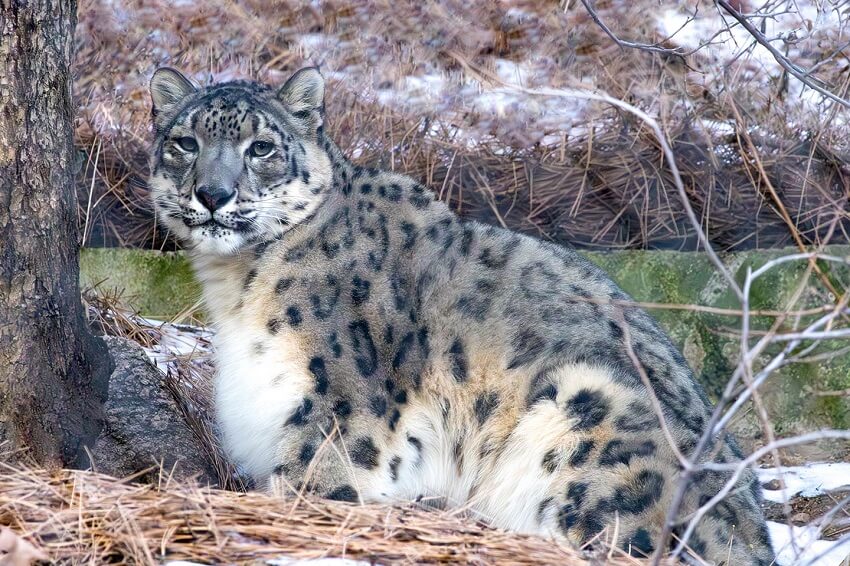
1.6. Cheetah
- Kingdom: Animalia
- Phylum: Chordata
- Class: Mammalia
- Order: Carnivora
- Suborder: Feliformia
- Family: Felidae
- Subfamily: Felinae
- Genus: Acinonyx
- Species: A. jubatus
The cheetah (Acinonyx jubatus) is the fastest land animal on Earth, capable of running at speeds up to 112 km/h. They can grow up to 2.3 meters long, including their tail. According to the Cheetah Conservation Fund, cheetahs typically weigh between 34 and 57 kg.
Cheetahs are primarily found in northern, eastern, and southern Africa. They also live in Asia but are almost extinct, with only a small population remaining in Iran. They usually eat small to medium-sized prey, including gazelles.
Giant cheetahs once existed on Earth and were much larger than today’s living cheetahs. In 2011, scientists discovered a 1.8-million-year-old fossil in a location in the Republic of Georgia of an extinct cheetah species called Acinonyx pardinensis, which was estimated to weigh around 110 kg.
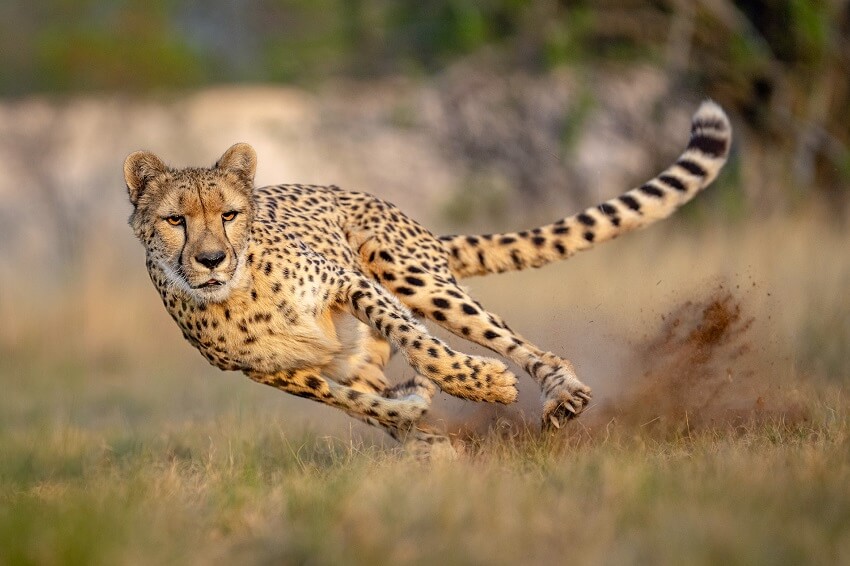
1.5. Cougar
- Kingdom: Animalia
- Phylum: Chordata
- Class: Mammalia
- Order: Carnivora
- Suborder: Feliformia
- Family: Felidae
- Subfamily: Felinae
- Genus: Puma
- Species: P. concolor
The cougar (Puma concolor) is the most widespread big cat in the Americas and is known by many other names, such as mountain lion, puma, or catamount. According to Panthera, a wild cat conservation organization, cougars can be found from southern Alaska and Canada in the western half of North America to southern Chile at the tip of South America.
Their range was once much larger, but they have been eradicated by humans from the eastern half of North America, with the exception of a small population still living in Florida. Many cougar populations are also declining in Central and South America due to threats such as habitat loss and illegal hunting.
The U.S. Forest Service states that cougars can grow to nearly 2.5 meters long, including their tail, and weigh between 59 and 68 kg. However, some can be even larger, weighing up to 100 kg. Cougars hunt small, medium, and large prey. In North America, they primarily eat deer.
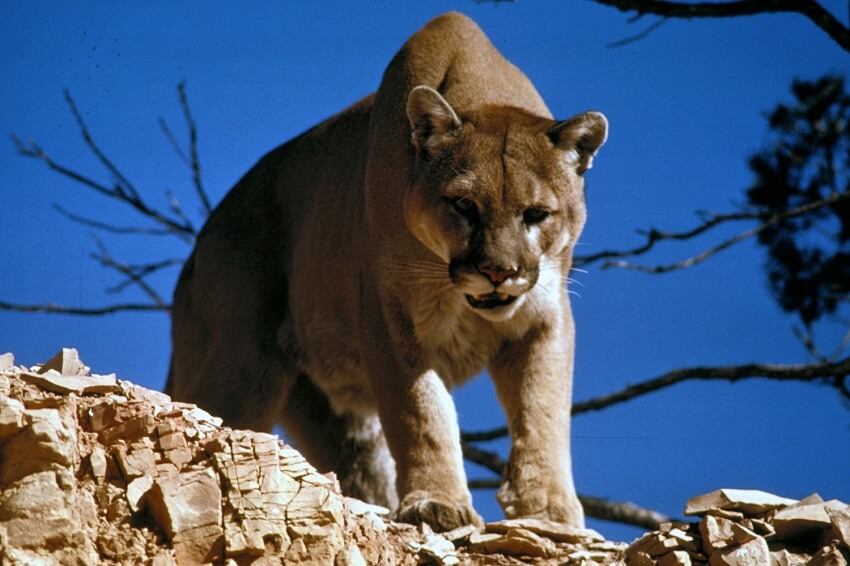
1.4. Leopard
- Kingdom: Animalia
- Phylum: Chordata
- Class: Mammalia
- Order: Carnivora
- Suborder: Feliformia
- Family: Felidae
- Subfamily: Pantherinae
- Genus: Panthera
- Species: P. pardus
Leopards are dangerous and powerful predators found across parts of Africa and Asia. They typically grow up to 1.9 meters long (excluding the tail), which can add another 1 meter, and can weigh up to 75 kg.
Leopards are sometimes attacked and killed by other big cats that see them as competitors for food, including lions in Africa and tigers in Asia. To avoid this, leopards often hunt at different times and locations than other predators. Leopards typically eat medium-sized prey, including small antelope and gazelles.
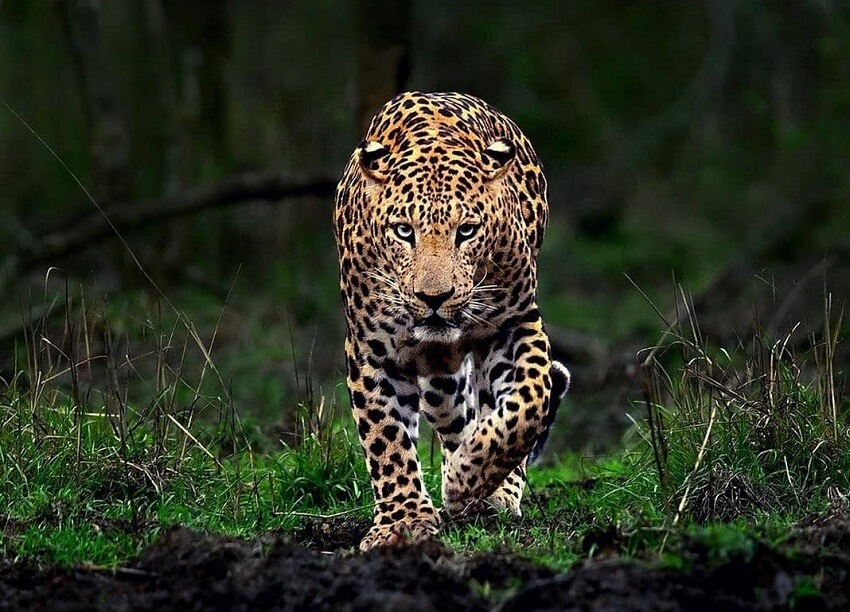
1.3. Jaguar
- Kingdom: Animalia
- Phylum: Chordata
- Class: Mammalia
- Order: Carnivora
- Suborder: Feliformia
- Family: Felidae
- Subfamily: Pantherinae
- Genus: Panthera
- Species: P. onca
The jaguar (Panthera onca) is the largest big cat in the Americas. They live in North, Central, and South America, but most inhabit the Amazon rainforest. Jaguars are occasionally spotted near the Mexican border in the United States, but humans have eliminated most of these big cats from the northern region, including Arizona and New Mexico.
Jaguars grow between 1.5 and 1.8 meters long, not including their tail, and up to 2.7 meters long with their tail. According to Panthera, they can weigh up to 158 kg. Jaguars hunt a variety of animals within their range, including deer, monkeys, and fish.
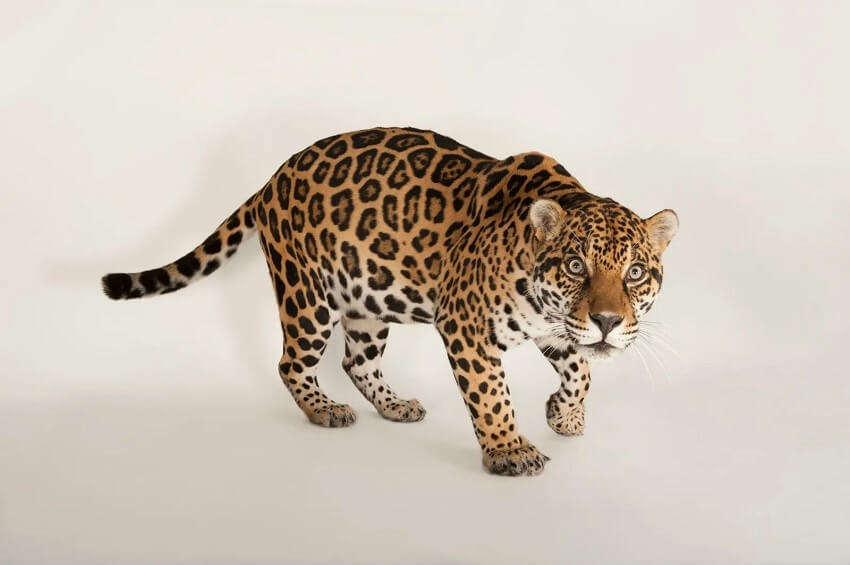
1.2. Lion
- Kingdom: Animalia
- Phylum: Chordata
- Class: Mammalia
- Order: Carnivora
- Suborder: Feliformia
- Family: Felidae
- Subfamily: Pantherinae
- Genus: Panthera
- Species: P. leo
Lions are the second-largest big cat in the world and are often called the “king of beasts” or “king of the jungle.” They live in prides and are the most social of all cat species. Male lions are larger than females and have a majestic mane. Males can grow up to 3 meters long, including their tail, and weigh up to 250 kg.
Lion populations are declining, but they can be found in most sub-Saharan African countries, such as Botswana, Tanzania, and the Central African Republic. There is also an isolated population of Asian lions living in northwestern India. Lions primarily eat medium to large-sized prey, including antelopes and zebras.
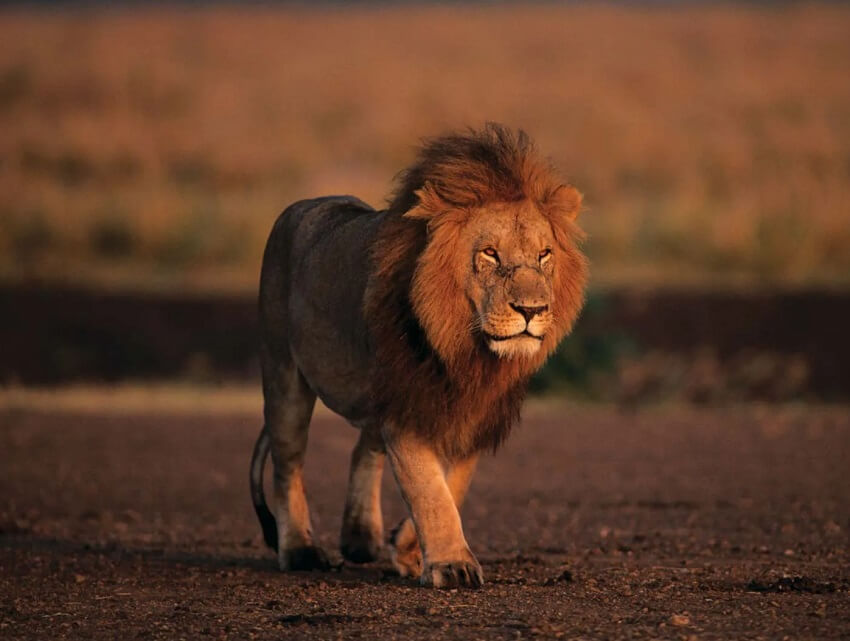
1.1. Tiger
- Kingdom: Animalia
- Phylum: Chordata
- Class: Mammalia
- Order: Carnivora
- Suborder: Feliformia
- Family: Felidae
- Subfamily: Pantherinae
- Genus: Panthera
- Species: P. tigris
The tiger (Panthera tigris) is the largest big cat. According to the World Wildlife Fund (WWF), these striped cats also grow up to 3 meters long, similar to lions, but tigers are heavier and can weigh up to 300 kg. This is three times the weight of the heaviest cougar.
Tigers primarily live in the tropical forests of Asia, including India and Indonesia, and are scattered in colder climates such as the Russian Far East and the mountains of Bhutan. They are at the top of the food chain and hunt animals such as deer and wild boars.
Tigers once had a much wider range and larger population, but their numbers have significantly declined over the past 100 years due to human activities, such as poaching and habitat loss. According to Panthera, there are currently only about 3,900 tigers left in the wild.
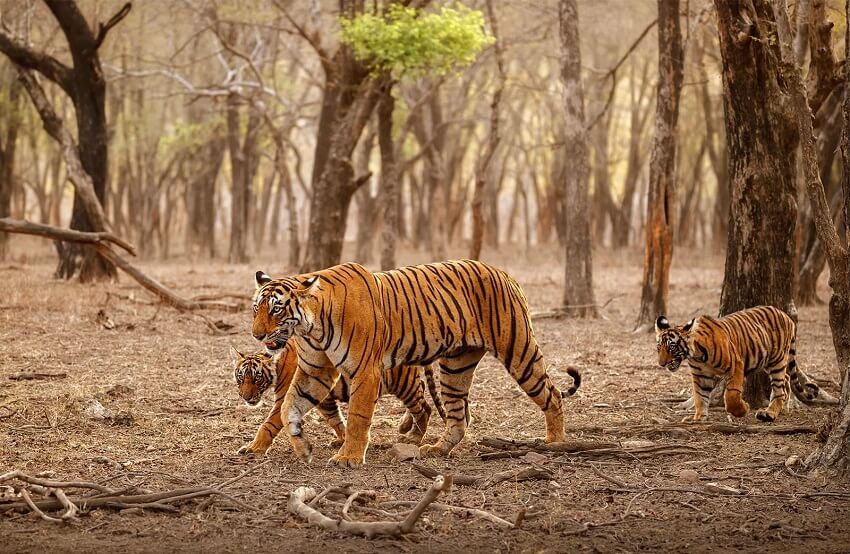
2. FAQs
1. What is considered a “big cat”?
Big cats are members of the Panthera genus or other large felines known for their size, strength, and predatory skills, such as lions, tigers, leopards, and jaguars.
2. Which is the largest big cat in the world?
The Siberian tiger (Panthera tigris altaica) is the largest big cat, with males weighing up to 660 pounds (300 kg).
3. Are all big cats endangered?
Many big cats are endangered or vulnerable due to habitat loss, poaching, and declining prey populations, but conservation efforts are helping protect some species.
4. Can big cats be kept as pets?
Keeping big cats as pets is illegal in most countries and considered unsafe due to their size, strength, and natural predatory behavior.
The world’s largest big cats are powerful creatures, exuding both strength and a rare beauty and grace. From the majestic Siberian tiger to the agile leopard, each species plays a crucial role in maintaining the balance of its ecosystem.
Unfortunately, many of these species face threats from habitat loss and illegal poaching, making conservation efforts more urgent than ever. By learning about and sharing information on these incredible big cats, we can help raise awareness and protect them for future generations. Thank you for following Know All Animals!



